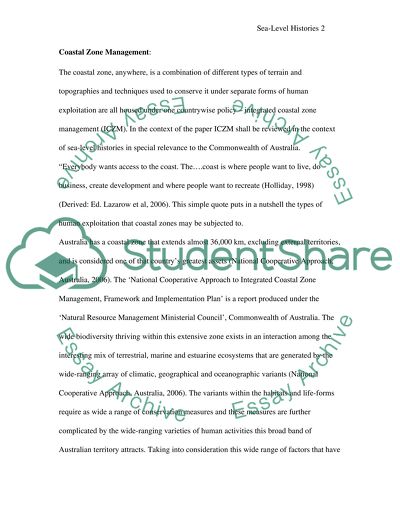Cite this document
(Australia: The Significance of Sea-Level Histories Assignment Example | Topics and Well Written Essays - 1750 words, n.d.)
Australia: The Significance of Sea-Level Histories Assignment Example | Topics and Well Written Essays - 1750 words. https://studentshare.org/environmental-studies/1500673-explain-why-sea-level-histories-coastal-sector-by-coastal-sector-will-vary-how-are-the-histories-assembled-what-is-the-best-substitute-for-a-welldated-loca
Australia: The Significance of Sea-Level Histories Assignment Example | Topics and Well Written Essays - 1750 words. https://studentshare.org/environmental-studies/1500673-explain-why-sea-level-histories-coastal-sector-by-coastal-sector-will-vary-how-are-the-histories-assembled-what-is-the-best-substitute-for-a-welldated-loca
(Australia: The Significance of Sea-Level Histories Assignment Example | Topics and Well Written Essays - 1750 Words)
Australia: The Significance of Sea-Level Histories Assignment Example | Topics and Well Written Essays - 1750 Words. https://studentshare.org/environmental-studies/1500673-explain-why-sea-level-histories-coastal-sector-by-coastal-sector-will-vary-how-are-the-histories-assembled-what-is-the-best-substitute-for-a-welldated-loca.
Australia: The Significance of Sea-Level Histories Assignment Example | Topics and Well Written Essays - 1750 Words. https://studentshare.org/environmental-studies/1500673-explain-why-sea-level-histories-coastal-sector-by-coastal-sector-will-vary-how-are-the-histories-assembled-what-is-the-best-substitute-for-a-welldated-loca.
“Australia: The Significance of Sea-Level Histories Assignment Example | Topics and Well Written Essays - 1750 Words”. https://studentshare.org/environmental-studies/1500673-explain-why-sea-level-histories-coastal-sector-by-coastal-sector-will-vary-how-are-the-histories-assembled-what-is-the-best-substitute-for-a-welldated-loca.


